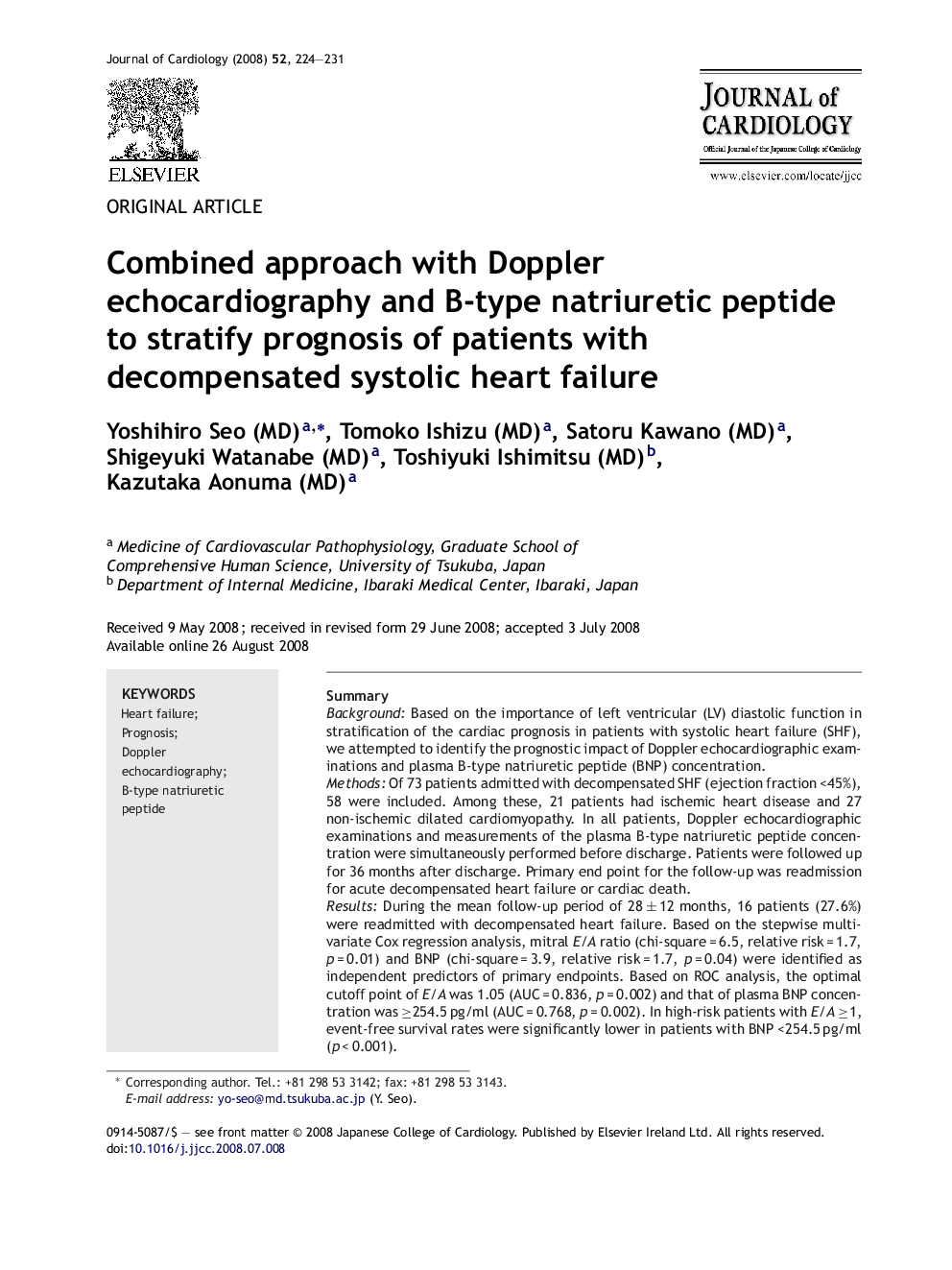| Article ID | Journal | Published Year | Pages | File Type |
|---|---|---|---|---|
| 2963312 | Journal of Cardiology | 2008 | 8 Pages |
SummaryBackgroundBased on the importance of left ventricular (LV) diastolic function in stratification of the cardiac prognosis in patients with systolic heart failure (SHF), we attempted to identify the prognostic impact of Doppler echocardiographic examinations and plasma B-type natriuretic peptide (BNP) concentration.MethodsOf 73 patients admitted with decompensated SHF (ejection fraction <45%), 58 were included. Among these, 21 patients had ischemic heart disease and 27 non-ischemic dilated cardiomyopathy. In all patients, Doppler echocardiographic examinations and measurements of the plasma B-type natriuretic peptide concentration were simultaneously performed before discharge. Patients were followed up for 36 months after discharge. Primary end point for the follow-up was readmission for acute decompensated heart failure or cardiac death.ResultsDuring the mean follow-up period of 28 ± 12 months, 16 patients (27.6%) were readmitted with decompensated heart failure. Based on the stepwise multivariate Cox regression analysis, mitral E/A ratio (chi-square = 6.5, relative risk = 1.7, p = 0.01) and BNP (chi-square = 3.9, relative risk = 1.7, p = 0.04) were identified as independent predictors of primary endpoints. Based on ROC analysis, the optimal cutoff point of E/A was 1.05 (AUC = 0.836, p = 0.002) and that of plasma BNP concentration was ≥254.5 pg/ml (AUC = 0.768, p = 0.002). In high-risk patients with E/A ≥1, event-free survival rates were significantly lower in patients with BNP <254.5 pg/ml (p < 0.001).ConclusionsThe complementary assessment of Doppler transmitral flow and plasma BNP concentration may be reliable in identifying the prognosis of patients with SHF.
